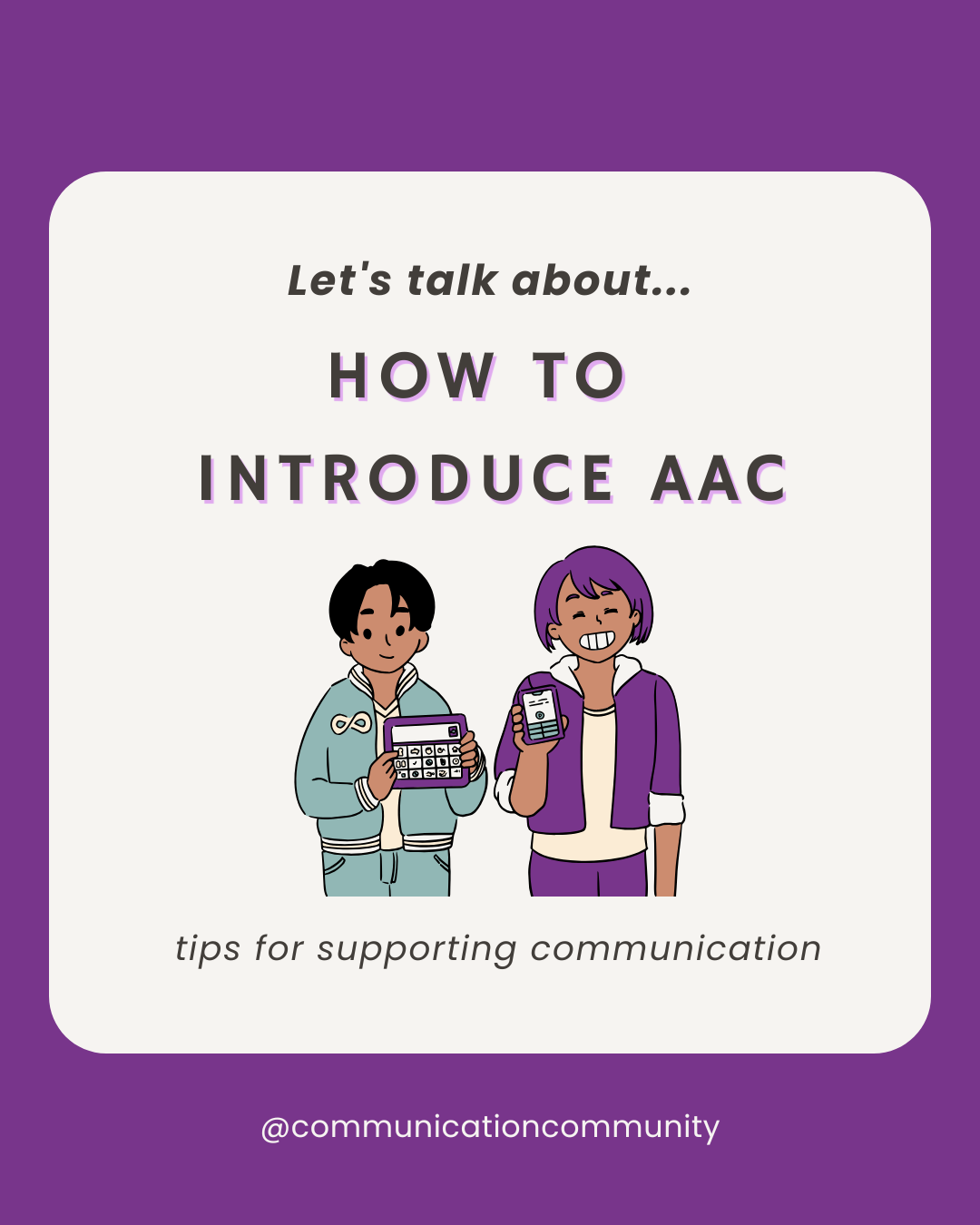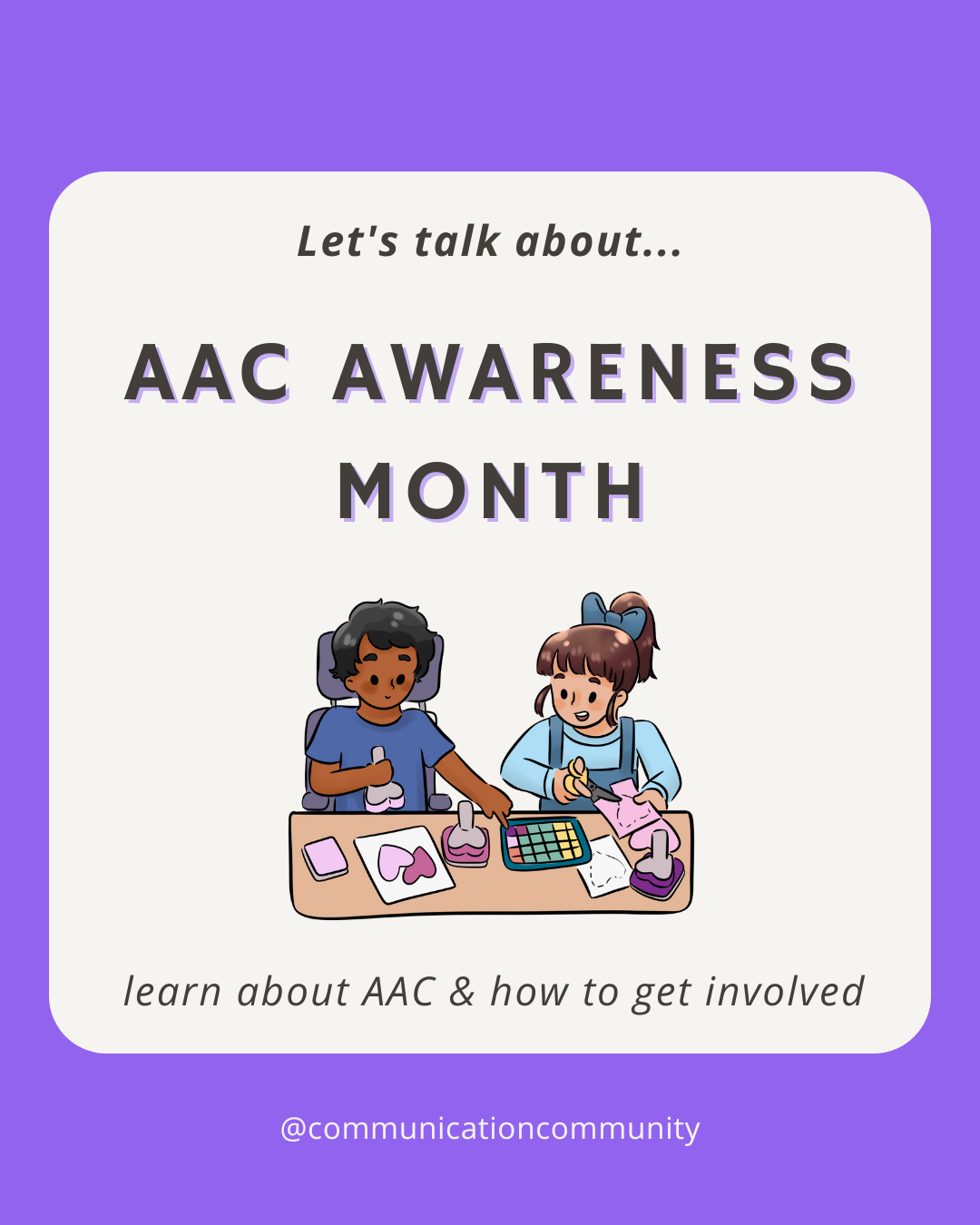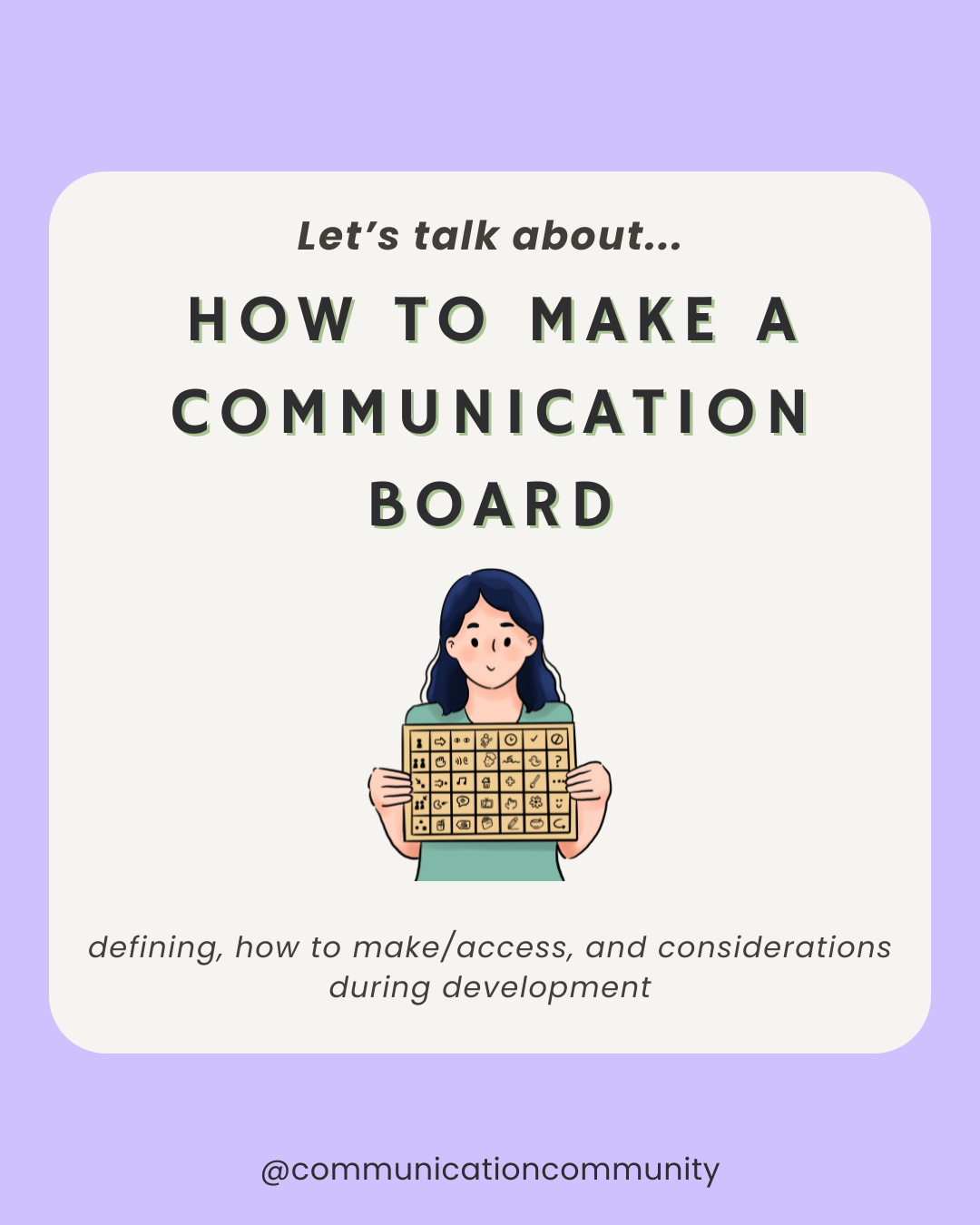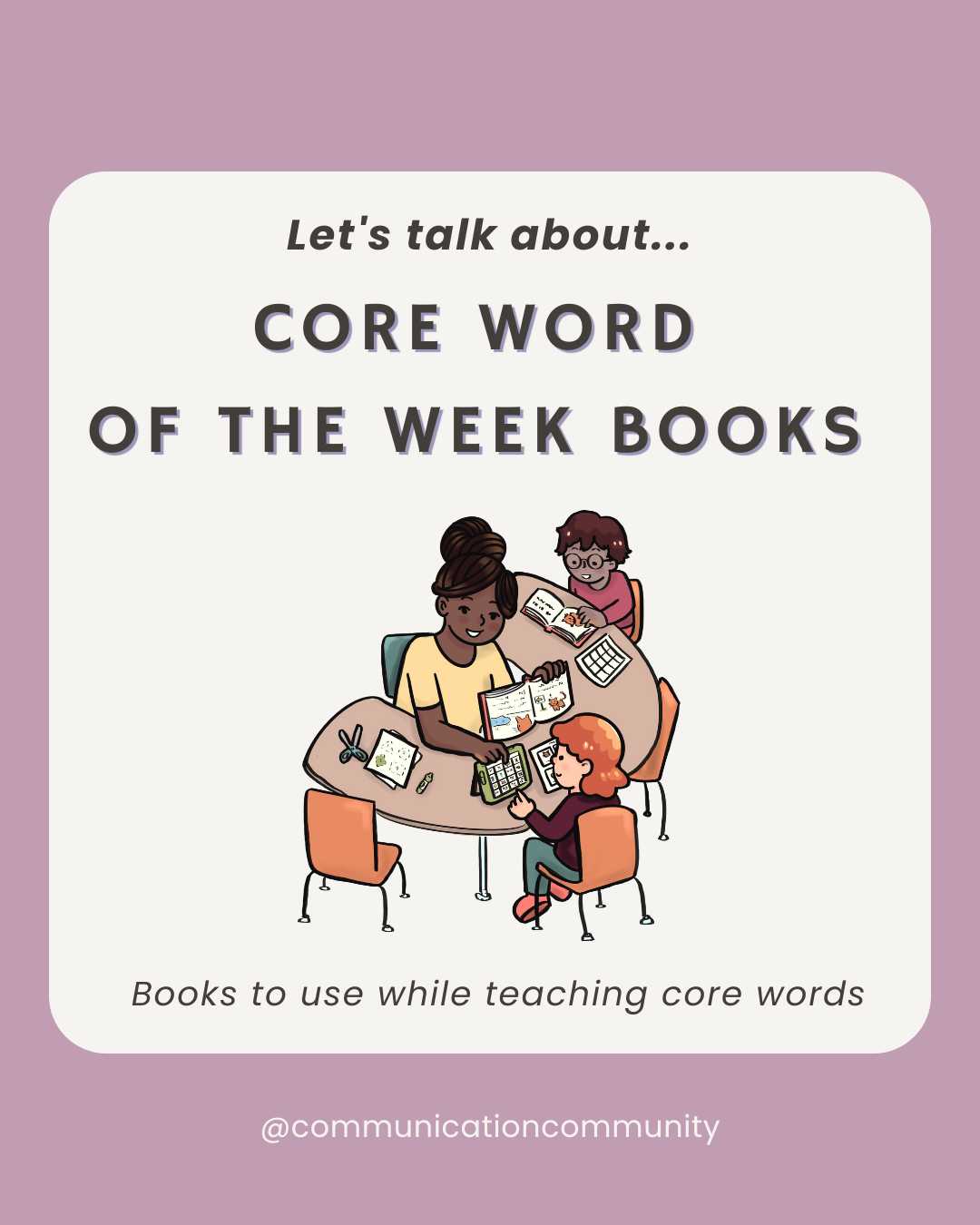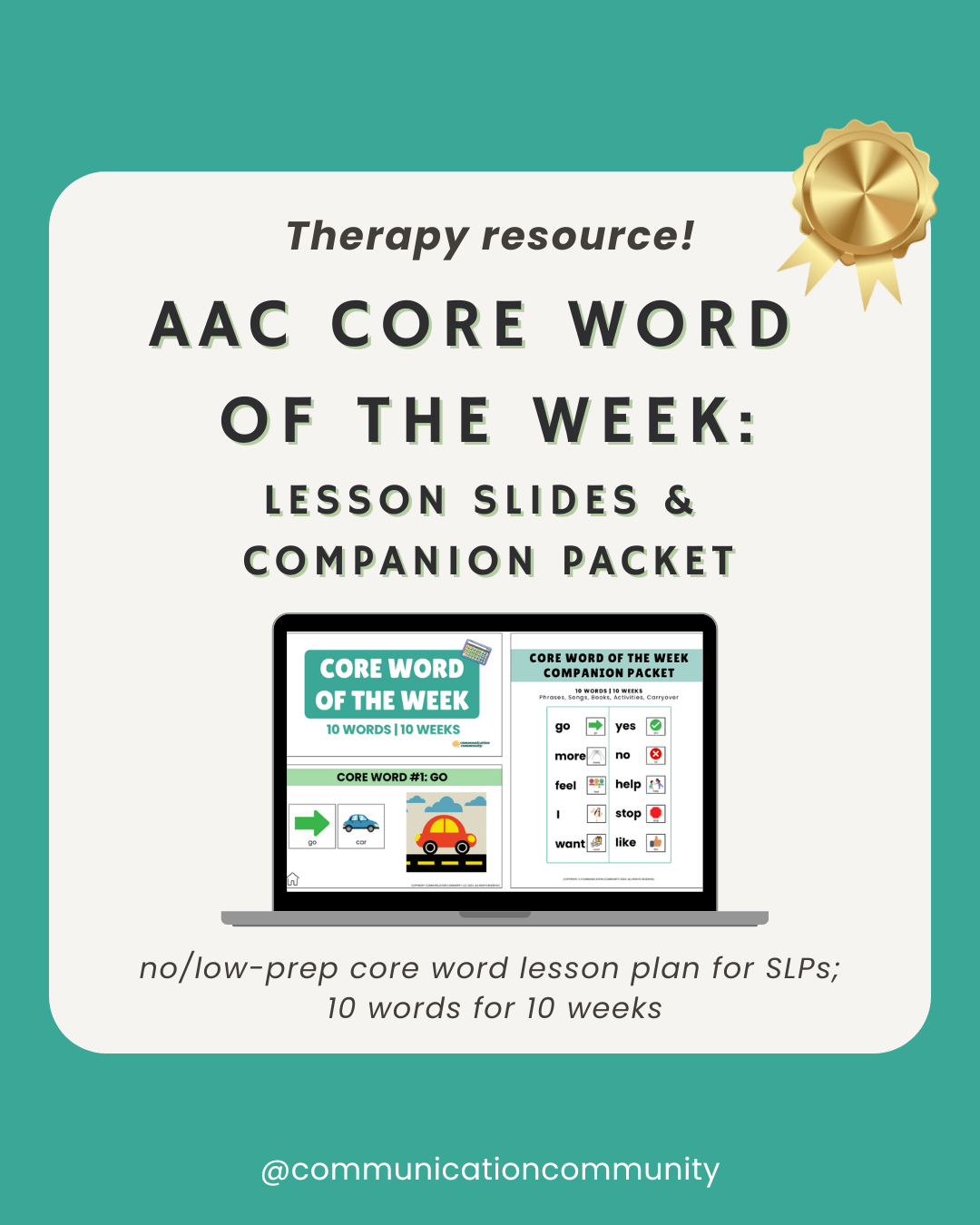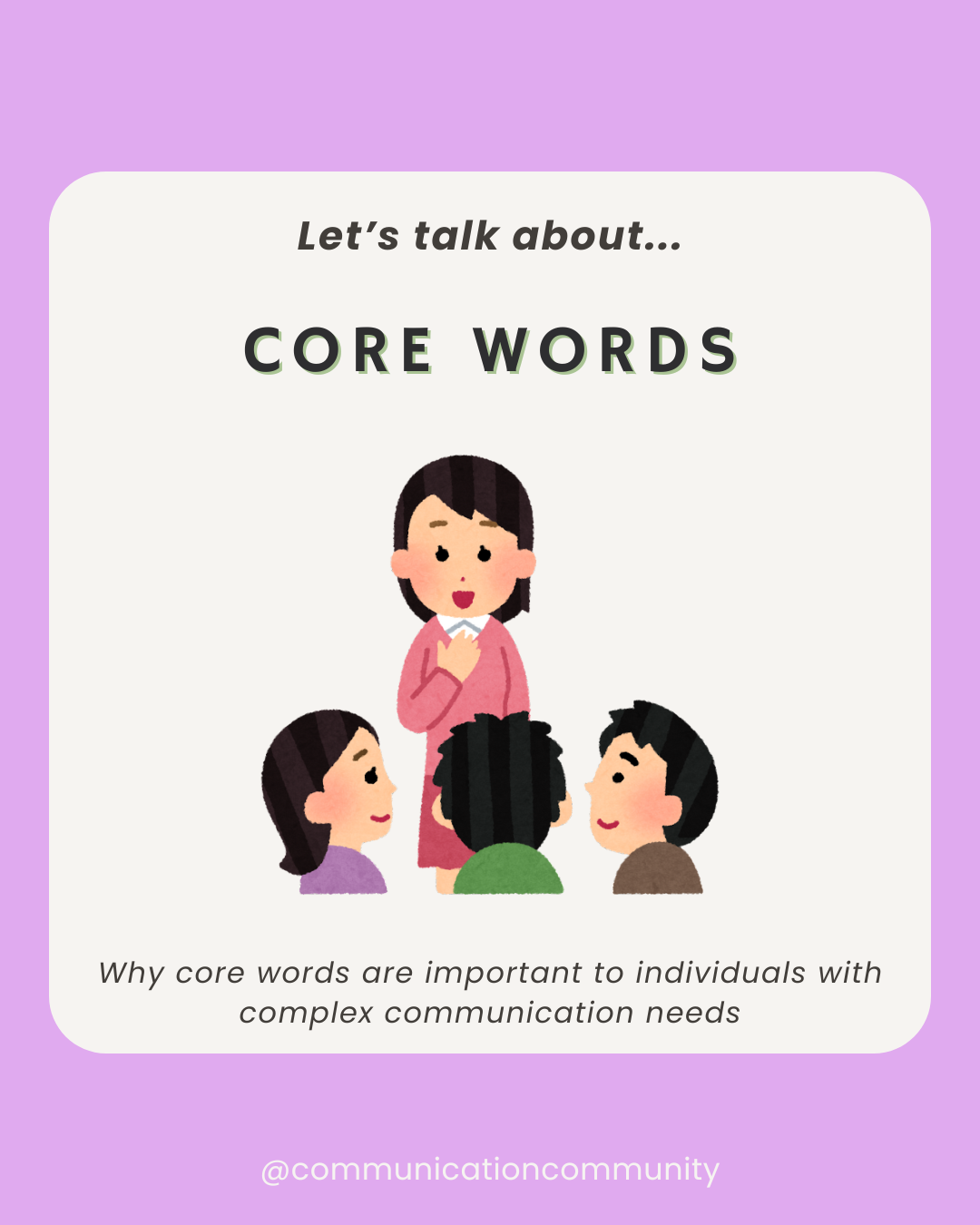Article Sections:
- What is AAC?
- Why Use AAC?
- How to Get an AAC Device
- Preparing for AAC Speech Therapy Sessions
- What to Remember When Introducing AAC
- Making an AAC Introduction Plan
- AAC Introduction Activities
- Tips for Continuing AAC Use
- AAC Frequently Asked Questions
- Further your AAC Knowledge
What is AAC?
Augmentative and alternative communication (AAC) refers to forms of communication besides speaking. It includes gestures, manual signs, writing, communication boards, speech-generating devices, and more. AAC can be incredibly valuable for individuals who are not able to fulfill their communication needs solely by speaking.
AAC may be used by individuals with emerging communication skills or by individuals with developed communication skills. Individuals with emerging communication skills may include a young child recently diagnosed with Autism. Individuals with developed communication skills may be older adults who have neurodegenerative conditions (e.g., ALS).
Why Use AAC?
AAC allows individuals to more effectively communicate their wants, needs, and ideas. Using AAC can enhance an individual’s ability to convey their messages to their communication partners (the individuals with whom they are interacting). In many cases, individuals who use AAC are considered total communicators or multi-modal communicators, meaning they may use a variety of communication modalities (e.g., gestures and high tech AAC) when communicating with others.
Access our What is AAC? handout for quick tips, myths and facts, and more. Get it when you join our Premium Community.
How to Get an AAC Device
Accessing an AAC device is (unfortunately) not always straightforward because of insurance and varying factors. However, there are a few different AAC funding options and paths:
- Medical route: You may work with a primary care physician (PCP) to get a referral for speech therapy and/or an AAC evaluation team. An SLP can introduce you to AAC and may collaborate with occupational therapists (OTs) to assist in positioning and device access, such as using mounts or different angles for AAC devices. Your health insurance may cover all or part of the cost of a device.
- Education route: For individuals enrolled in school, AAC may be introduced through school-based speech therapy services. A school district may provide an AAC device, though there may be some restrictions on use (e.g., it may not be accessible over the summer).
Preparing for AAC Speech Therapy Sessions
If you are an SLP who is going to introduce AAC to a client, it is vital to be prepared.
Some preparation steps include:
- Doing research: Explore articles, peer-reviewed journals, and AAC software sites to deepen your understanding of types of AAC and strategies for introduction.
- Collaborating with team members: Your SLP colleagues may have experience introducing AAC and can provide tips they found helpful. Additionally, other related professionals may have also worked with AAC devices before. Inside our Premium Community, you can message us or post questions in dedicated spaces to learn more!
- Consulting with AAC experts: Speak to AAC specialists or teams who can provide valuable insights. Local AAC teams or consultants from AAC companies (e.g., Tobii Dynavox, PRC-Saltillo, Lingraphica) can be especially helpful.
What to Remember When Introducing AAC
Before introducing AAC, always keep these principles in mind:
- Assume competence: Every individual is capable of using a communication system. Even if the first AAC system you trial doesn’t seem like the best fit right away, there are no prerequisites for communication.
- Be flexible: Adjusting plans is common with AAC. Being able to adapt quickly is essential.
- Understand your first plan might not “work” right away: AAC systems often take time to implement. Don’t be discouraged if initial attempts don’t go as planned.
Making an AAC Introduction Plan
Planning is crucial when introducing AAC. Begin by gathering background information on the individual, including their medical and therapy history, current language use, and literacy skills.
Our Case History and Ethnographic Interview forms are GREAT for gathering key information. Access them inside our Premium Community or on TPT.
- High tech AAC: Have a device or app ready to trial. Be sure to know how to program words, adjust volume, and modify button sizes and layouts so you can make quick changes on the go.
- Mid or low tech AAC: Familiarize yourself with mid tech options such as Big Mack buttons or GoTalk, or low tech communication books and boards.
- Access options: Ensure you have tools like styluses or adjustable stands for positioning devices in ways that suit the individual’s needs.
AAC Introduction Activities
Once you have the tools ready, you want to engage in activities that encourage communication. This may look like following the client’s lead and their interests. For example, if they love blocks, you may build a castle while modeling AAC.
Be sure to have backup activities, as initial plans may not always succeed.
For individuals who have developed language skills but may benefit from AAC because they have aphasia or a motor speech disorder, you may choose to focus on topics they find important, such as communicating feelings, asking for assistance, or discussing their hobbies.
Tips for Continuing AAC Use
Introducing an AAC system is just the beginning. To ensure continued success, consider these tips:
- Learn about the AAC system: Take time to familiarize yourself with the device, including vocabulary (e.g., core and fringe words) and operational skills.
- Model AAC use: Demonstrate AAC to the individual by using it in everyday interactions (this is called Aided Language Stimulation).
- Provide communication opportunities, but don’t force it: Encourage AAC use in natural settings, but allow the individual to lead. Do not force them to use the AAC system; you want it to be a positive thing, not something they have to engage with!
- Encourage ownership: Individuals should feel empowered to use their AAC system, customize its vocab, and make other adjustments (e.g., change the voice) as needed.
- Find useful accessories: Consider additional tools like mounts, switches, or apps that may enhance the AAC experience.
AAC Frequently Asked Questions:
- Is AAC only for children?
- No, AAC can be used by individuals of all ages, including adults with neurodegenerative conditions like ALS.
- How long does it take someone to learn how to use their AAC device?
- Learning AAC varies for each individual and depends on a number of factors. The individual’s SLP may be able to provide more insights; however, it is impossible to determine a definitive timeline.
- Does AAC prevent natural speech recovery?
- Nope! AAC can support and enhance natural speech recovery by providing individuals with a way to communicate during the recovery process.
- Is AAC only appropriate for long-term conditions?
- It's not! AAC is a tool that can be used temporarily or long-term.
- Is using AAC really complicated?
- Many AAC systems are easy to learn, and there’s support available to help with more advanced tools when needed.
- Will using AAC prevent my child from learning how to speak?
- Studies have actually shown that using AAC can actually enhance speech and language development.
Further your AAC Knowledge
- We have over 50 blog posts related to AAC! Check them out, here.
- Access our AAC resources:
- Our Core Word of the Week resource is one of our most popular resources! It contains lesson slides and an accompanying packet for 10 core words.
- Write meaningful AAC goals to target a variety of skills.
- You can access these individual resources on TPT or get them all for one price when you join our Premium Community!


